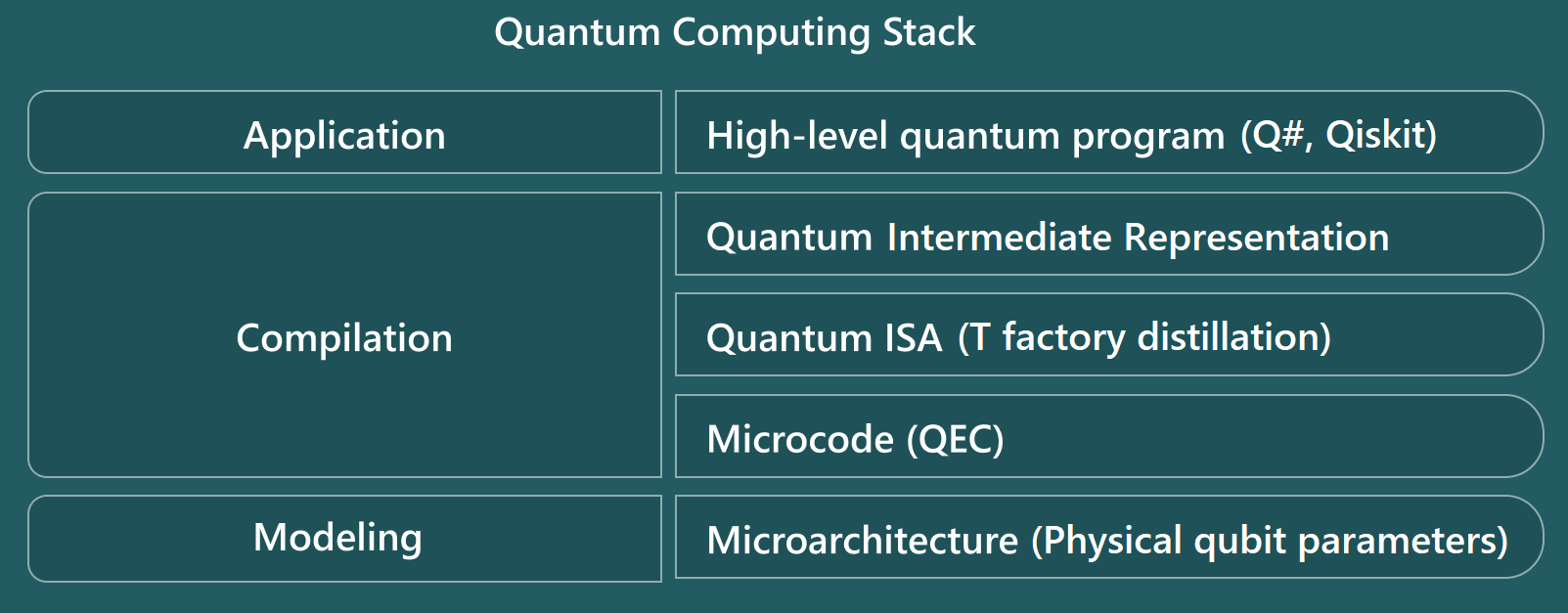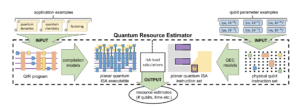The Azure Quantum Resource Estimator: An In-Depth Look at an Important Quantum Tool

Insider Brief
- Resource estimation and optimization are significant hurdles in quantum computing.
- Resource estimation is a way to determine the necessary resources and optimization and how to use those resources most efficiently is referred to as optimization.
- The Azure Quantum Resource Estimator is an open-source tool designed to provide detailed resource requirements for quantum algorithms on fault-tolerant quantum computers.
Quantum computing is still in its early stages of development — but its potential to power transformative uses in everyday life — from finding new drug therapies to designing materials that can help tackle climate change — is revving up enthusiasm for the technology.
However, challenges remain before these nascent quantum computers become the fault-tolerant devices that are powerful enough to deliver real-world advantage. Among those significant hurdles are resource estimation — or, determining the necessary resources — and using those resources most efficiently — or, optimization.
And, in order to cross from the theoretical to the practical quantum computer developers and their customers will need the tools that can eliminate that — no quantum pun intended — uncertainty.
What Is The Azure Quantum Resource Estimator?
In this article, we’ll take a look at one of the tools being developed to confront this challenge: Microsoft Azure Quantum Resource Estimator. It’s an open-source tool designed to provide detailed resource requirements for quantum algorithms on fault-tolerant quantum computers. We’ll rely on information from a recent research paper and details from Microsoft to break down Azure Quantum Resource Estimator.
This tool — which is free of charge and doesn’t require an Azure account — allows researchers and developers to focus on algorithm development, optimize performance, and reduce costs.
In a recent research paper posted to the pre-print server ArXiv, a team of Microsoft Quantum explains the need for the resource estimator: “To quantify the technical requirements for building such quantum supercomputers, we need to be able to a priori estimate the resource requirements of implementing the relevant quantum algorithms under realistic assumptions. Doing so will achieve at least two goals. On the physical side, resource estimation gives us necessary and sufficient conditions that quantum machines need to meet to be considered practical. On the logical side, resource estimation clarifies which algorithms truly give a quantum advantage over classical computation, and which quantum algorithms do not meet this bar.”
The Essence of Resource Estimation
Resource estimation in quantum computing is akin to budgeting in traditional project management. It involves predicting the number of qubits, both physical and logical, required to run a quantum algorithm, estimating the runtime, and understanding the trade-offs between different qubit technologies and error correction schemes. The importance of this process cannot be overstated. Without accurate resource estimates, developing practical quantum algorithms that can run on future quantum hardware would be nearly impossible.
The Azure Quantum Resource Estimator addresses this critical need by offering detailed insights into the resources necessary for executing quantum algorithms. It calculates the total number of physical and logical qubits, the execution time, and provides the formulas and values used for each estimate. This transparency helps developers understand the impact of their design choices and refine their algorithms accordingly.
Customization and Flexibility
One of the standout features of the Azure Quantum Resource Estimator is that it features a high degree of customization. Users can start with well-known, predefined qubit parameter settings and quantum error correction (QEC) schemes or configure unique settings that are tailored to their specific needs.
This customization spans various machine characteristics, such as operation error rates, operation speeds, and error correction thresholds. For clarity, here are these concepts defined:
- Operation Error Rates: The frequency at which errors occur during quantum operations or computations.
- Operation Speeds: The rate at which quantum operations or computations are performed.
- Error Correction Threshold: The maximum error rate that a quantum error correction protocol can handle while still effectively correcting errors and maintaining accurate quantum computations.
Key Parameters for Customization:
Key parameters for customization include defining the physical qubit model, selecting a quantum error correction scheme, allocating an error budget, specifying distillation units, and setting constraints on physical qubits, runtime, and T factory copies.
- Physical Qubit Model: Users can specify the instruction set, qubit measurement time, error rates, and gate times.
- Quantum Error Correction Scheme: This includes the number of physical qubits per logical qubit, the logical cycle time, and the error correction threshold.
- Error Budget: Users can allocate an error budget for implementing logical qubits, T state distillation, and the synthesis of rotation gates.
- Distillation Units: This involves specifying the number of T states required for the distillation process, the output from the distillation process, and the probability of failure.
- Constraints: Users can set constraints on the maximum number of physical qubits, maximum runtime, and the number of T factory copies.
This level of customization is offered so that the Resource Estimator can be adapted to various quantum systems and research needs, making it a versatile tool in the quantum computing toolkit.

Comprehensive Analysis Across the Quantum Stack
The Azure Quantum Resource Estimator encompasses all levels of the quantum computing stack, from the application level to the quantum programming and compilation level, down to the hardware and modeling level. This holistic approach allows users to customize parameters at each level and analyze their impact on the overall resource requirements.
For instance, at the application level, users can focus on algorithm optimization and performance. At the quantum programming level, they can fine-tune their code and compilation processes to align with specific hardware characteristics. At the hardware level, they can model different qubit technologies and error correction schemes to determine the most efficient configurations.
Visualization and Optimization
Visualizing the trade-offs between the number of physical qubits and algorithm runtime is crucial for understanding and optimizing quantum programs. The Azure Quantum Resource Estimator provides tools for visualizing these trade-offs using space-time diagrams. These diagrams help users identify the optimal combination of qubits and runtime for their specific needs.
Additionally, the Resource Estimator allows for the batching of multiple estimates. This feature enables users to run the same quantum algorithm with different configurations of target parameters and compare the results. This comparative analysis helps in understanding how different qubit architectures and QEC schemes impact the overall resources, aiding in the selection of the most efficient configuration.

Supporting Diverse Quantum Development Needs
The Azure Quantum Resource Estimator offers support for a wide range of quantum development scenarios. Whether you are developing QEC codes, optimizing quantum algorithms, improving the performance of quantum programs, or exploring large-scale quantum computing, the Resource Estimator can provide the necessary tools and insights. We will take at a few of those scenarios below:
User Scenarios and Applications:
- Developing QEC Codes: Customize QEC codes and compare different parameter combinations to find the most effective error correction strategies.
- Optimizing Quantum Algorithms: Analyze the impact of different hardware and software configurations on resource requirements to fine-tune algorithms.
- Improving Performance: Use known estimates and cached costs of subroutines to reduce execution time and optimize performance.
- Large-Scale Quantum Computing: Estimate resources for real-world problems expected to be solved by large-scale quantum computers, such as quantum chemistry problems.
- Quantum-Safe Cryptography: Compare the performance of different encryption algorithms and their resilience to quantum attacks.
Practical Example 1: Quantum Chemistry Problem
OK. So, this probably sounds like a great tool for academic and scientific investigations, but can this work for people exploring the use of quantum computers for practical applications?
Or it this a bunch of fertilizer?
Be careful how you answer that because the answer to both questions might be yes.
In the article, Microsoft tells us that one of the most promising applications of large-scale quantum computers is in solving complex quantum chemistry problems. For instance, accurately simulating the nitrogenase enzyme at the quantum level could revolutionize the production of fertilizer, which could take a significantly swipe at reducing carbon emissions and addressing food insecurity.
The team tells us: “You could replace the highly energy-intensive process which is used to produce enough fertilizer to feed the planet. This has the potential to reduce the global carbon footprint and also to help address concerns regarding food insecurity in a growing population.”
The Azure Quantum Resource Estimator can be used to estimate the resources required for such simulations, providing insights into the feasibility and optimization of these complex calculations. This example underscores the practical impact of resource estimation in advancing quantum computing applications.
Practical Example 2: Understanding Space and Time Visualizations in Quantum Programming
Quantum programs fundamentally depend on two critical resources: space, represented by the number of qubits, and time, defined by the algorithm’s execution duration. These resources are significantly affected by the qubits themselves, along with the operations, T-factories and T-states that power the program. (T-factories are systems that generate high-fidelity T-states and T-States are special quantum states used in fault-tolerant quantum computing for performing non-Clifford gates.)
To help you navigate these complexities, the Resource Estimator offers visual tools that clearly illustrate how resources are distributed across these elements. These visualizations enable you to make informed decisions and optimize the balance between space and time.
For An Even Deeper Dive
The tool is part of the Azure Quantum Development Kit (Modern QDK). Getting started is straightforward, and Microsoft provides comprehensive documentation and tutorials to help users navigate the tool. Whether you are new to quantum computing or an experienced researcher, the Resource Estimator offers valuable insights and capabilities to advance your work.
Click here to learn more about the Azure Quantum Resource Estimator.
